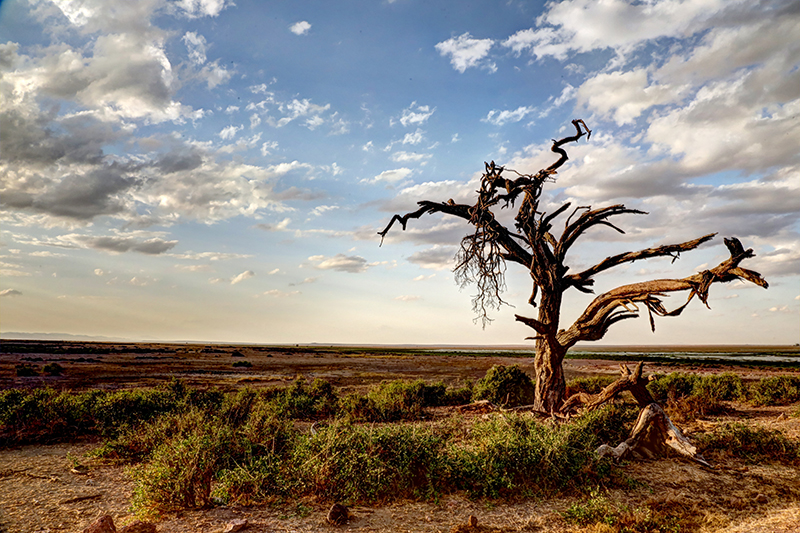Atmospher Sci & Global Chg
Research Highlights
March 2018
A Challenging Future for Tropical Forests
Dead trees are on the rise along with increases in tree mortality drivers and mechanisms.

Tree death shuts off photosynthesis and increases carbon release (from dead wood), leaving more carbon dioxide in the atmosphere. Enlarge Image.
The Science
Moist tropical forests are the largest terrestrial carbon sink in the world and house most of Earth's terrestrial biodiversity. However, climatic and ecological benefits of intact moist tropical forests face the threat of increasing tree mortality due to environmental and biotic changes.
A Pacific Northwest National Laboratory scientist led a study to determine the risks of increasing tropical forest tree mortality. Scientists reviewed the state of knowledge regarding moist tropical forest tree mortality. They created a conceptual framework with testable hypotheses regarding the drivers, mechanisms, and interactions that may underlie increasing mortality rates of moist tropical forests. The research team then identified next steps for improved understanding and reduced predictive uncertainty.
The Impact
Researchers found that mortality rates of trees in moist tropical forests are increasing as the drivers and mechanisms of tree mortality—such as temperature, drought, and carbon dioxide—continue to rise. These effects are expected to continue increasing under future environmental conditions, with serious consequences to Earth's carbon cycle.
Summary
Tropical forests absorb a significant amount of atmospheric carbon dioxide. Tree death reverses this process by shutting off photosynthesis and increasing carbon release (from dead wood), leaving more carbon dioxide in the atmosphere.
Increasing tree mortality rates observed over the past few decades in moist tropical forests are associated with rising temperature, vapor pressure deficit, liana (woody vine) abundance, drought, wind events, fire, and possibly carbon dioxide fertilization-induced increases in stand thinning. Most of these mortality drivers ultimately kill trees in part through carbon starvation and hydraulic failure, though the relative importance of each driver is unknown. Ecosystems with greater diversity may buffer tropical forests against large-scale mortality events, but recent and expected trends in mortality drivers are likely to continue or increase.
Model predictions of tropical tree mortality are rapidly improving, but they require more empirical knowledge regarding the most common drivers and their subsequent mechanisms. This study identified critical hypotheses, data sets, and model developments required to quantify the underlying causes of increasing mortality rates and to improve predictions of future mortality and carbon storage consequences under environmental change.
For more information, see the PNNL news release, "Increasing tree mortality in a warming world."
Acknowledgments
Sponsors: This manuscript is the product of the workshop "Tropical forest mortality" held in Santa Fe, New Mexico, in 2015. The U.S. Department of Energy Office of Science supported the workshop and the writing of the manuscript as part of the Next Generation Ecosystem Experiment-Tropics project.
Research Area: Climate and Earth Systems Science
PNNL researcher: Nate McDowell
Reference: N.G. McDowell et al., "Drivers and Mechanisms of Tree Mortality in Moist Tropical Forests." New Phytologist, early view (2018). [DOI: 10.1111/nph.15027]
